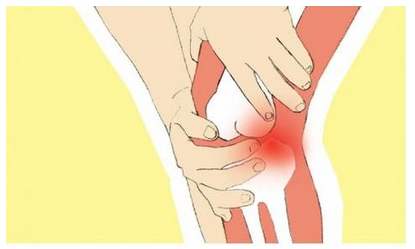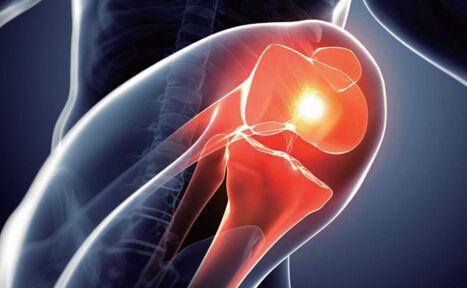SCI论文(www.lunwensci.com):
摘要:骨关节炎(Osteoarthritis,OA)是关于关节软骨及周围软组织的退行性改变,并且机械应力和老化加速了软骨的破坏和骨重建,最终导致关节功能障碍的最常见退行性关节疾病。自噬是一个真核细胞高度保守的均质平衡过程,通过隔离和降解细胞大分子、受损细胞器和某些病原体来维持细胞的平衡。自噬基于PI3K-AKT-mTOR信号通路调控软骨细胞,进而改善软骨细胞退变;为进一步加深对细胞自噬的认识,因此本文查阅大量文献基础上细胞自噬在骨性关节炎发病机制及治疗作一定阐述,希望对OA的治疗提供新的思路和治疗靶点。
关键词:细胞自噬;骨性关节炎;软骨细胞;生理功能
本文引用格式:黄鹏,丰哲,彭聪聪.骨关节炎中细胞自噬的发病机制及其治疗进展[J].世界最新医学信息文摘,2019,19(82):104-105,107.
Pathogenesis and Therapeutic Progress of Autophagy in Osteoarthritis
HUANG Peng1,FENG Zhe2*,PENG Cong-cong1
(1.Guangxi University of Traditional Chinese Medicine,Nanning Guangxi;2.Ruikang Hospital Affiliated to Guangxi University of Traditional Chinese Medicine,Nanning Guangxi)
ABSTRACT:Osteoarthritis(OA)is the most common degenerative joint disease that involves degenerative changes on articular cartilage and surrounding soft tissues,and mechanical stress and aging accelerate the destruction of cartilage and bone reconstruction,ultimately leading to joint dysfunction.Autophagy is a highly conserved homogeneous equilibrium process of eukaryotic cells,which maintains the balance of cells by isolating and degrading cell macromolecules,damaged organelles and some pathogens.Autophagy regulates chondrocytes based on the pi3k-akt-mtor signaling pathway,thereby improving the degeneration of chondrocytes.In order to further deepen the understanding of autophagy,this paper,based on a large number of literatures,makes certain elaboration on the pathogenesis and treatment of osteoarthritis,hoping to provide new ideas and therapeutic targets for the treatment of OA.
KEY WORDS:Autophagy;Osteoarthritis;Chondrocytes;Physiological function
0引言
骨关节炎(Osteoarthritis,OA)是关于关节软骨及周围软组织的退行性改变,机械应力和老化加速了软骨的破坏和骨重建,最终导致关节功能障碍的最常见退行性关节疾病[1-2]。OA主要以关节软骨变性、关节疼痛和功能损害为特征。全球60岁以上人群中约有18%的女性和9.6%的男性具备膝关节炎症状,约有25%的人无法进行正常日常活动。到2050年,预计将有1.3亿人存在膝关节炎症状,构成社会负担[3]。骨关节炎若不积极治疗,影响日常生活质量,降低生活满意度,甚至导致抑郁、焦虑、无助感等心理疾病产生,抑郁症状对OA膝关节疼痛的因果效应不随时间变化,但随着抑郁情绪的持续,疼痛程度显著增加[4]。自噬是一个高度保守的均质平衡过程,通过隔离和降解细胞大分子、受损细胞器和某些病原体来维持细胞的平衡[5]。大量证据表明,自噬参与OA的病理进展,自噬的增强可以保护关节软骨免受OA进展的影响[6-7]。因而,OA治疗靶点可能与调控软骨细胞自噬的发生存在联系。本文就细胞自噬在骨性关节炎发病机制及治疗予如下阐述。
1自噬生物学特性
1963年著名细胞生物学家Christian De Duve首先提出细胞自噬概念。自噬是所有真核细胞高度保守的降解过程[8]。正常生理状态下细胞为保持稳态此时自噬处于低水平状态,但细胞受到饥饿、氧化应激、营养缺乏或其他应激条件诱导下,促进细胞自噬提高[9]。自噬根据转移途径不同主要包括:巨自噬、微自噬和分子伴侣介导的自噬,其最常见的形式是巨自噬,具有独特的双层膜结构,其包含:自噬活化、双层膜的延伸、自噬小体的闭合及其与溶酶体等结合。微自噬被认为是一种选择性或非选择性的溶酶体吞噬、降解胞质物质的进程。分子伴侣介导的自噬是涉及一个复杂而特异的途径,底物在分子伴侣的的帮助下无障碍地进入溶酶体的过程,然后可溶性胞质蛋白通过溶酶体膜转运降解。大量研究表明保持自噬程度的稳定不仅是软骨细胞重要的生存方式,而且可预防或延缓软骨退行性改变[10-11]。
2mTOR信号通路及其调控的细胞自噬在OA发病中的作用
2.1MTOR调控机制
在分子信号转导中,自噬接受雷帕霉素靶蛋白(mammalian target of rapamycn,mTOR)的严格负调控[12]。mTOR作为细胞内生长的核心地位,其上下游信号传导途径非常复杂,其中包含两种不同形式的复合物mTORC1和mTORC2[13];其中mTORC1在调控细胞生长、凋亡、能量代谢及细胞自噬等方面起到重要作用[14]。AMPK是细胞内一种重要的能量感受器,能量代谢调节转变从合成代谢到分解代谢。然而在葡萄糖饥饿条件下,其中mTORC1上游通路主要通过激活AMPK的自噬过程,进而磷酸化结节性硬化症复合物2(tuberous sclerosis complex 2,TSC2)抑制mTORC1的活性,从而调控细胞自噬水平的表达[15-16]。AMPK调控自噬是通过它对mTORC1负调控起作用的。TSC2通过抑制激活所必须的小GTP酶Rheb,实现对mTORC1的抑制,上调细胞自噬水平的表达。
2.2PI3K-AKT-mTOR信号通路与骨性关节炎
PI3K-AKT-mTOR信号通路参与基因转录,蛋白质翻译、核糖体合成等生物过程。Akt位于PI3K-AKT-mTOR信号通路的“交通枢纽”,承接上游PI3K信号传递给AKT下游靶点mTOR,具备承上启下作用[17]。然而抑制mTOR和软骨特异性的缺失可延缓OA的发生发展。mTOR通过直接或间接激活Akt可使细胞中靶蛋白磷酸化,抑制mTORC1与p70S6等复合物活性,诱导自噬发生[18]。Beatriz[19]等研究发现衰老导致OA的机制与自噬活性降低有关,自噬水平下降可损伤细胞及组织进而引诱关节软骨病变;Sasaki等[20]的研究发现雷帕霉素通过降低ROS的表达激活软骨细胞自噬水平,从而抑制细胞凋亡。Guowang[21]发现姜黄素基于Akt/mTOR信号通路作用于手术诱导的OA小鼠,可提升细胞自噬水平增加细胞活力,缓解细胞凋亡程度;研究表明PI3K/AKT/mTOR信号通路对于细胞自噬发生起到重要作用[22]。经典PI3K信号通路参与抑制自噬的发生。PI3K通过生长因子受体信号通路激活,激活的I型PI3K能在细胞中产生第二信使磷脂酰肌醇-3.4.5-三激酶(PIP3),随着PIP3激活PDK1,同时在PDK1的协助下磷酸化AKT,AKT并抑制TSC1/2复合物,从而使得mTORC1被激活,从而抑制自噬[23]。另外mTORC2与细胞骨架的重组与细胞的存活有关,其磷酸化可激活AKT,进而抑制细胞自噬的发生[24]。另外研究发现软骨细胞自噬水平下降进而会导致细胞凋亡增加和线粒体功能障碍[25],其中线粒体功能障碍所造成的氧化应激和能量代谢障碍又是软骨损伤和软骨退变的重要诱因[26]。OA软骨的病理特征是软骨细胞数量的减少和软骨细胞外基质的持续降解[27];其中软骨细胞占软骨体积的2%左右,并且维持正常的软骨代谢,分泌软骨基质[28]。软骨细胞的凋亡和细胞外基质合成对于延缓OA软骨退变起到关键性作用。因此,自噬对于软骨细胞调控有望成为治疗OA的新方向。
3软骨细胞自噬与OA治疗
目前对于OA生理病理的过程认识取得了许多进展,但目前仍无有效的治疗方法来阻止或预防OA的发生。目前治疗方案主要集中在改善膝关节疼痛和功能,依赖于口服药物治疗、功能锻炼及外科手术的结合;影响患者的治疗很大程度取决于不同患者的因素,如合并症的发生或者其他受累关节的影响。药物治疗的选择主要包括非甾体抗炎止痛药,营养软骨药,改善微循环药等,当保守治疗无法正常保证日常生活的时候,则需要选择手术干预。然而手术干预带来的负担、风险和疗效的不确定性,日后难以确切保证患者的生活质量。因此,有必要致力于新的靶向治疗发展。
3.1雷帕霉素
雷帕霉素是一种大环内酯类抗生素,最早应用于真菌感染;随后发现其具备免疫抑制作用,应用于减少器官移植中存在的免疫排斥反应。近年来,作为mTORC1的抑制剂,雷帕霉素可调控细胞自噬,在OA的治疗方面引起了广泛关注。雷帕霉素(mTOR)激酶是哺乳动物营养和能量状态的主要传感器之一,当受到如营养物质和生长因子(如胰岛素)等刺激因子的影响时,可被PI3K-AKT信号通路激活,提升蛋白翻译促进细胞生长[29]。Carames等[30]研究表明雷帕霉素通过抑制核糖体蛋白S6磷酸化(mTOR的靶蛋白)和激活LC3(自噬的主要标志物)来影响小鼠膝关节mTOR信号通路。与对照组相比,雷帕霉素治疗组软骨降解程度显著降低(P<0.01),与滑膜炎发生率显著降低(P<0.05)相关。在雷帕霉素干预下保持软骨细胞结构,减少ADAMTS-5在关节软骨和IL-1β表达。此外研究表明雷帕霉素对mTOR的抑制会触发一个负反馈回路,间接激活Akt信号通路[31]。在成年关节软骨中,磷酸肌醇3(PI-3)激酶-akt信号通路促进细胞基质合成和软骨细胞存活。激活Akt在关节软骨细胞显著增加蛋白合成和II型胶原蛋白表达[32]。Takayama等[33]研究结果表明,关节内注射雷帕霉素降低mTOR的表达,延迟手术诱导关节软骨降解,在OA诱导的软骨细胞中激活LC3,并且雷帕霉素治疗的膝关节中降低VEGF、COL10A1和MMP13的表达;
3.2选择性mTOR激酶抑制剂(mTOR inhibitor,Torin)1
Torin 1是mTORC1/2的双重抑制剂。Cheng等[34]通过向兔OA和细胞OA模型注射Torin 1和3-MA,结果发现Torin 1提高Beclin-1和LC3的表达程度,软骨细胞内自噬体数量明显增多,抑制细胞和膝关节的退行性改变,而3-MA的治疗结果完全相反;说明Torin 1可通过激活自噬延缓OA的退行性改变。
3.3氨基葡萄糖
目前认为氨基葡萄糖是关节软骨的生物组成,在临床中已被用于OA的治疗,但应用尚未被广泛接受,且存在争议[35-36]。研究表明[37]:氨基葡萄糖对软骨细胞的凋亡和自噬具有时间依赖性的双重作用。短时间内软骨接触细胞氨基葡萄糖可激活自噬,从而起到保护软骨作用;然而长期氨基葡萄糖则会产生相反的效果(长链脂肪酸的积累和过氧化物酶体功能障碍),需要进一步研究剂量与氨基葡萄糖显露时间之间的关系,可能剂量和时间是OA治疗过程中一个决定性因素。
4总结
综上所述,自噬是维持细胞代谢平衡和细胞器更新的重要机制,同时与OA的发生和发展也存在密切关系。自噬在软骨细胞中可能存在两种拮抗作用,在软骨退变早期通过细胞自噬作用使损伤的细胞再修复,起到一种自噬性保护作用。随着软骨老化进展,自噬功能随之出现减弱,软骨修复能力呈现下降趋势。因此自噬与OA有待深入研究,可从自噬基因表达调控机制,利用生物分子学手段致力于临床,延缓或改善骨性关节炎发展。
参考文献
[1]Charlier E,Deroyer C,Ciregia F,et al.Chondrocyte dedifferentiation and osteoarthritis(OA)[J].Biochem.Pharmacol,2019:07.
[2]Sliogeryte K,Botto L,Lee D A,et al.Chondrocyte dedifferentiation increases cell stiffness by strengthening membrane-actin adhesion[J].Cartil,2016,24(5).
[3]Messina OD,Vidal Wilman M,Vidal Neira LF.Nutrition,osteoarthritis and cartilage metabolism[J].Aging Clin Exp Res,2019,13.
[4]Rathbun A M,Stuart E A,Shardell M,et al.Dynamic Effects of Depressive Symptoms on Osteoarthritis Knee Pain[J].Arthritis Care Res(Hoboken),2018,70(1).
[5]Mizushima N,Levine B,Cuervo A M,et al.Autophagy fights disease through cellular self-digestion[J].Nature,2008,451,(7182):1069-1075.
[6]Takayama K,Kawakami Y,Kobayashi M,et al.Local intra-articular injection of rapamycin delays articular cartilage degeneration in a murine model of osteoarthritis[J].Arthritis research&therapy,2014,16,(6):482-482.
[7]Cheng N T,Guo A,Cui Y P.Intra-articular injection of Torin 1 reduces degeneration of articular cartilage in a rabbit osteoarthritis model[J].Bone&joint research,2016,5,(6):218-224.
[8]Francesca G,Sadia A,Forbes-Hernandez T Y,et al.Autophagy in Human Health and Disease:Novel Therapeutic Opportunities[J].Antioxid.Redox Signal,2019,30(4).
[9]Rodriguez-Navarro,J.A.;Cuervo,A.M.Autophagy and lipids:tightening the knot[J].Seminars in Immunopathology,2010,32(4):343.
[10]Cheng N T,Guo A,Meng H.The protective role of autophagy in experimental osteoarthritis,and the therapeutic effects of Torin 1 on osteoarthritis by activating autophagy[J].Bmc Musculoskeletal Disorders,2016,17(1):1-8.
[11]Zheng G,Zhan Y,Li X,et al.TFEB,a potential therapeutic target for osteoarthritis via autophagy regulation[J].Cell death&disease,2018,9(9):858-858.
[12]Zoncu R,Efeyan A,Sabatini D M.mTOR:from growth signal integration to cancer,diabetes and ageing[J].Nat Rev Mol Cell Biol,2011,12(1):21-35.
[13]Jun-Yi Z,Le-Kun F,Yan-Hong D,et al.Circadian protein Cry2 is a prognostic factor of colorectal cancer and a predictor of chemotherapy[J].Chinese Journal of Pathophysiology,2012,28(8):1373-1377.
[14]Ravikumar B,Sarkar S,Davies J E,et al.Regulation of Mammalian Autophagy in Physiology and Pathophysiology[J].Physiological Reviews,2010,90(4):1383-1435.
[15]Inoki K,Zhu T,Guan K L.TSC2 Mediates Cellular Energy Response to Control Cell Growth and Survival[J].Cell,2003,115(5):0-590.
[16]Gwinn D M,Shackelford D B,Egan D F,et al.AMPK phosphorylation of raptor mediates a metabolic checkpoint[J].Molecular Cell,2008,30(2):214-226.
[17]Wang Y,Hu Z,Liu Z,et al.MTOR inhibition attenuates DNA damage and apoptosis through autophagy-mediated suppression of CREB1[J].Autophagy,2013,9(12):2069-2086.
[18]Don AS,Tsang CK,Kazdoba TM,et al.Targeting mTOR as a novel therapeutic strategy for traumatic CNS injuries[J].Drug Discovery Today,2012,17:15-16.
[19]Beatriz Caramés,Olmer M,Kiosses W B,et al.The relationship of autophagy defects to cartilage damage during joint aging in a mouse model[J].Arthritis&Rheumatology,2015,67(6):1568.
[20]Sasaki H,Takayama K,Matsushita T,et al.Autophagy modulates osteoarthritis-related gene expression in human chondrocytes[J].Arthritis&Rheumatology,2012,64(6):1920-1928.
[21]Guowang Z,Jiaqing C,Erzhu Y,et al.Curcumin improves age-related and surgically induced osteoarthritis by promoting autophagy in mice[J].Biosci.Rep,2018,38(4).
[22]Abrahamsen H,Stenmark H,Platta H W.Ubiquitination and phosphorylation of Beclin 1 and its binding partners:Tuning class III phosphatidylinositol 3-kinase activity and tumor suppression[J].FEBS Lett,2012,586(11).
[23]Sini P,James D,Chresta C,et al.Simultaneous inhibition of mTORC1 and mTORC2 by mTOR kinase inhibitor AZD8055 induces autophagy and cell death in cancer cells[J].Autophagy,2010,6(4):553-554.
[24]Jung C H,Ro S H,Cao J,et al.mTOR regulation of autophagy[J].Febs Letters,2010,584(7):1287-1295.
[25]López de Figueroa P,Lotz MK,Blanco FJ,et al.Autophagy activation and protection from mitochondrial dysfunction in human chondrocytes[J].2015,67(4).
[26]Biczo G,Vegh E T,Shalbueva N,et al.Mitochondrial dysfunction,through impaired autophagy,leads to endoplasmic reticulum stress,deregulated lipid metabolism,and pancreatitis in animal models[J].Gastroenterology,2018,154(3).
[27]Lotz M K,Caramés,Beatriz.Autophagy and cartilage homeostasis mechanisms in joint health,aging and OA[J].Nature Reviews Rheumatology,2011,7(10):579-587.
[28]郭秦炜,田得祥,敖英芳.正常及骨性关节炎关节软骨的胶原表型[J].
中国运动医学杂志,2003(02):204-209.
[29]Sabatini,David M.mTOR and cancer:insights into a complex relationship[J].Nature Reviews Cancer,2006,6(9):729-734.
[30]Carames B,Hasegawa A,Taniguchi N,et al.Autophagy activation by rapamycin reduces severity of experimental osteoarthritis[J].Annals of the Rheumatic Diseases,2012,71(4):575-581.
[31]Shi X,Shen B,Jing Yang,et al.In vivo kinematics comparison of fixed-and mobile-bearing total knee arthroplasty during deep knee bending motion[J].Knee Surgery Sports Traumatology Arthroscopy,2014,22(7):1612-1618.
[32]Yin W,Park J I,Loeser R F.Oxidative Stress Inhibits Insulin-like Growth Factor-I Induction of Chondrocyte Proteoglycan Synthesis through Differential Regulation of Phosphatidylinositol 3-Kinase-Akt and MEK-ERK MAPK Signaling Pathways[J].Journal of Biological Chemistry,2009,284(46):31972-31981.
[33]Takayama K,Kawakami Y,Kobayashi M,et al.Local intra-articular injection of rapamycin delays articular cartilage degeneration in a murine model of osteoarthritis[J].Arthritis Research&Therapy,2014,16(6):482.
[34]Cheng N T,Guo A,Meng H.The protective role of autophagy in experimental osteoarthritis,and the therapeutic effects of Torin 1 on osteoarthritis by activating autophagy[J].Bmc Musculoskeletal Disorders,2016,17(1):1-8.
[35]Aghazadeh-Habashi A,Jamali F.The glucosamine controversy;a pharmacokinetic issue[J].Journal of Pharmacy&Pharmaceutical Sciences,2011,14(2):264-273.
[36]Kanzaki N,Saito K,Maeda A,et al.Effect of a dietary supplement containing glucosamine hydrochloride,chondroitin sulfate and quercetin glycosides on symptomatic knee osteoarthritis:a randomized,double-blind,placebo-controlled study[J].Journal of the Science of Food and Agriculture,2012,92(4):862-869.
[37]Kang YH,Park S,Ahn C,et al.Beneficial reward-to-risk action of glucosamine during pathogenesis of osteoarthritis[J].European Journal of Medical Research,2015,20(1):1-13.
关注SCI论文创作发表,寻求SCI论文修改润色、SCI论文代发表等服务支撑,请锁定SCI论文网! 文章出自SCI论文网转载请注明出处:https://www.lunwensci.com/yixuelunwen/14935.html


